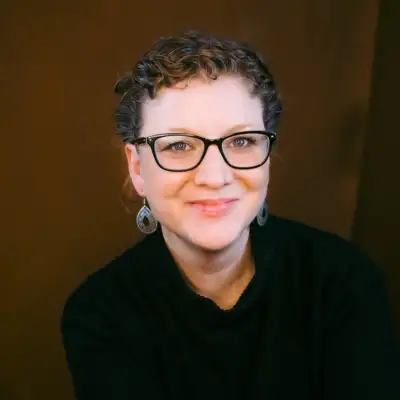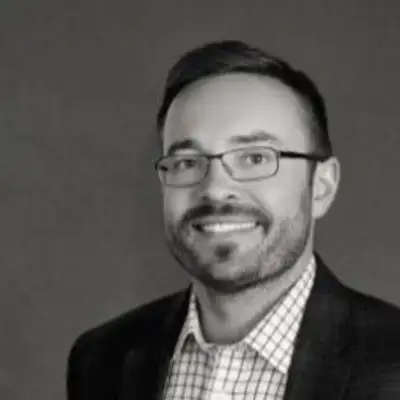Creators and Guests



What is Navigating Net Zero with Alexia Kelly?
Navigating Net Zero is a new podcast featuring conversations with practitioners and experts who are working through the complex realities of corporate decarbonization and sustainability.
We demystify and highlight the challenges, opportunities, and real-world experiences faced by the people leading their institutions' net-zero journeys.
Hosted by internationally-renowned climate change expert Alexia Kelly and brought to you by the Carbon Policy & Markets at the High Tide Foundation, Navigating Net Zero hopes to inspire action from this generation of climate leaders and the next.
Navigating Net Zero — Episode 7
Guest: Elizabeth Willmott
Alexia Kelly: Hi Liz — great to see you, and thanks so much for joining me on this episode of Navigating Net Zero.
Elizabeth Willmott: Thank you for having me. It’s such a pleasure to be here.
Alexia Kelly: As you know, Navigating Net Zero is where we talk about what’s working, what’s not, and what’s next on the corporate journey to net zero. You’ve been in the trenches on this for a long time.
For listeners: Liz Willmott has spent more than 20 years driving climate and sustainability action across public, nonprofit, and private sectors. At Microsoft, she helped lead the company’s carbon-negative strategy — including work on carbon removals, sustainable aviation fuel, and Microsoft’s groundbreaking internal carbon-pricing and governance system. She’s also held federal and municipal leadership roles, and now, through her firm Earthrise Consulting, she advises on policy, market standards, and integrity in climate solutions.
Liz, great to have you here.
Elizabeth Willmott: Thanks, Alexia — fantastic to be here. And I have to say, your leadership across sectors has been inspiring.
Alexia Kelly: That means a lot. I’ve learned so much from you and your work. Let’s start by hearing a bit about your journey — your time at Microsoft, and what’s getting you out of bed these days.
Elizabeth Willmott: Well, I’ll start at the very beginning. I grew up a bit of a tree hugger, but with people around me who had more conservative values, which encouraged me to stay open-minded. That shaped how I move through the world — always trying to understand different perspectives.
That mindset helped me transition from activism — I was at a small but mighty climate nonprofit in the Seattle area — into the corporate world. Going from advocacy to Microsoft was a big leap, but I was clear on my compass: serving the planet. That helped me stay grounded in the ethics behind Microsoft’s carbon strategy.
Alexia Kelly: I think a lot of people in our field wrestle with that question — whether to work inside or outside the system. What led you to decide that going inside a big company was the right way to make an impact?
Elizabeth Willmott: At the time, I felt strongly that we can’t villainize the corporate sector. Like it or not, it’s one of the biggest sources of power and influence in climate action. We need to harness that power and steer it toward planetary benefit.
When I joined Microsoft in 2016, I was struck by how sincere people were. There was real camaraderie — not just inside Microsoft but across companies and political divides. I met so many people who deeply care about living sustainably. When you approach this work with openness, you find that common ground everywhere.
Alexia Kelly: Tell us about your work there — what you did, and what surprised you most as you dug into Microsoft’s sustainability strategy.
Elizabeth Willmott: When I arrived, Microsoft already had a first-generation carbon program dating back to 2012. The company had made a carbon-neutral commitment and implemented an internal carbon fee.
At that time, though, the program sat in a part of the organization without much influence or resources. When Lucas Joppa became Microsoft’s first Chief Sustainability Officer, he elevated climate science into the company’s core business strategy. Executives began to understand that climate change wasn’t just an environmental issue — it was a business risk and an opportunity.
I’m proudest that our team — really hundreds of people — mainstreamed sustainability into one of the world’s largest corporations. We embedded it in the company’s financial systems — through the carbon fee, executive compensation, and the Climate Innovation Fund. That integration was both epic and fun.
Alexia Kelly: Let’s talk about that internal carbon fee. How did you land on that as the right tool, and what did it look like in practice?
Elizabeth Willmott: When the carbon fee was created in 2012 — by my then-colleague TJ DiCaprio and others — it was meant to raise awareness about climate within Microsoft and to generate funds for renewable-energy and carbon-offset projects. At the start, it was relatively small.
By 2018, we raised the fee and linked it more closely to the real cost of carbon abatement — pegging it to the cost of renewable energy. The idea was to make it financially attractive for business units to buy clean energy instead of paying the fee. Later, we applied the same model to sustainable aviation fuel and other mitigation efforts — using the funds to support solutions that weren’t yet financially viable.
Alexia Kelly: How did you decide what the right price should be?
Elizabeth Willmott: We looked at projected prices for carbon removals, sustainable aviation fuel, and renewables — balancing those against what business units could realistically absorb. It was about setting a price high enough to drive behavior, but still feasible within Microsoft’s operations.
Alexia Kelly: That’s fascinating — a very pragmatic approach rooted in marginal-abatement economics. Was it intentional for Microsoft to take such a unique, sometimes independent approach to sustainability?
Elizabeth Willmott: Honestly, we weren’t trying to be unique. We just wanted a plan that worked. We knew what we needed: buy more renewables, invest in sustainable aviation fuel, cut energy use, and fund removals. The carbon fee was simply the best mechanism to make that happen.
Alexia Kelly: How was it received internally?
Elizabeth Willmott: In the early days, there was curiosity — maybe some skepticism. But over time, executives embraced it. Some even started to gamify it — challenging their teams to avoid the fee. That was our dream outcome: people using the fee as motivation to act.
Alexia Kelly: That’s so powerful. Once carbon has a price, it becomes part of every decision. But getting executives on board can be tough. How did you win hearts and minds inside the company?
Elizabeth Willmott: Climate is an abstract problem, which makes it hard to connect emotionally. The carbon fee helped make it tangible. It turned analysis into action — funding real projects like carbon-removal or sustainable-fuel initiatives.
It shifted the frame from fear and guilt to hope and creation. That “toward something” mindset — moving toward solutions — is crucial, not just inside companies but across the climate movement.
Alexia Kelly: I love that — moving toward something. You and Lucas Joppa recently co-authored a Nature article outlining six roadblocks to net zero, and some ways to overcome them. What did you mean by that?
Elizabeth Willmott: That article came from both opportunity and frustration. I see corporate climate action as a kind of board game — companies trying to figure out how to move within unclear rules. The biggest frustration is that those “rules of the road” are often ambiguous or inflexible.
We also see a kind of purity test in the climate community that can discourage progress. Lucas and I wanted to say: let’s prioritize progress over perfection. We need intellectual flexibility to adapt to what works, right now.
Companies could easily do nothing. The fact that many are trying deserves recognition. We can still hold them accountable — but we should also give tailwinds to credible efforts.
Alexia Kelly: I completely agree. Let’s talk about markets — because there’s often resistance to market-based climate tools. But in a global capitalist economy, market-based accounting isn’t optional. Why are these instruments so essential in your view?
Elizabeth Willmott: A good plan is one that works. By 2030, we need far more accessible climate solutions.
Right now, if a company wants to fly employees on clean airplanes, they can’t — sustainable aviation fuel (SAF) isn’t yet widely available. The same is true for renewable energy in some grids. That’s why we need mechanisms that let companies fund these solutions, even if the physical molecules or electrons aren’t directly consumed.
They should be transparent about their actual emissions, of course, but they should also get credit for catalyzing progress. That’s how we scale emerging solutions.
Alexia Kelly: Exactly. We need to get money flowing quickly into solutions that work — or could work — even if they’re not perfect yet. You and Lucas emphasized collaboration as a key to breaking the current impasse. What does that look like in practice?
Elizabeth Willmott: Collaboration is absolutely essential. Companies have to work toward shared goals — and they’ll only invest if the products are compelling and cost-competitive.
One of Microsoft’s strengths has been combining its carbon fee with its Climate Innovation Fund — using one to fund purchases and the other to invest in early-stage technologies. We’re now seeing similar models at other companies.
We also need policy and accounting frameworks that make collaboration easier. The early Clean Energy Buyers Alliance is a great example: companies teamed up to advocate for renewables and streamline the rules of corporate procurement. That spirit of joint action remains critical.
Alexia Kelly: Speaking of collaboration — sustainable aviation fuel feels like a perfect example. Microsoft and Netflix were among the inaugural buyers in the Sustainable Aviation Buyers Alliance, or SABA. How did that model evolve, and what can we learn from it?
Elizabeth Willmott: The motivation behind SABA was simple: companies are going to keep flying, so we need to decarbonize aviation. To do that, we need more sustainable aviation fuel — and we need companies to fund production even before there’s universal supply.
But current accounting frameworks didn’t allow them to claim credit for those purchases, even though the analogy to renewable energy is clear. Just as companies can account for renewable energy in a “double-ledger” format — actual emissions on one side, renewable investment on the other — they should be able to do the same for SAF.
It’s not complicated: report actual emissions, and separately report the impact of the clean-fuel investments you’ve funded. That clarity would unlock a lot of progress.
Alexia Kelly: Let’s pivot to something more personal. You left Microsoft recently and have been exploring mindfulness and self-care. This is a tough time to be a sustainability professional. How are you staying grounded?
Elizabeth Willmott: It is a difficult time. What I’ve realized is that creativity, fun, and playfulness are crucial — not frivolous. They’re what sustain us.
I’ve had a meditation practice for 20 years, and I’ve always tried to bring joy into my teams — karaoke nights, music videos during the pandemic, moments of laughter. Those things matter.
They remind us why we care about this work — because life is precious. And when we nurture that joy, we think more clearly and stay resilient.
Alexia Kelly: That’s such a beautiful reminder. I think a lot of us struggle to give ourselves permission to rest. How have you navigated that balance?
Elizabeth Willmott: My version of balance isn’t extreme sports — it’s meditation, qigong, quiet time in nature.
But however people find it — skiing, hiking, biking — the key is to put down the heavy backpack once in a while. Take a breath. Look around.
And I draw inspiration from smaller, scrappy organizations — like the Clean Energy Transition Institute here in the Pacific Northwest, or Green Empowerment, which brings clean energy and water to communities around the world. Staying connected to those efforts reminds me why this work matters.
Alexia Kelly: I’m so glad you mentioned that. We often focus on big corporations, but community-based organizations are essential too. What can large institutions learn from them?
Elizabeth Willmott: They can learn to be entrepreneurial.
The best change agents — whether in a small nonprofit or a huge company — are resourceful and people-centered. When I joined Microsoft, I thought of it like a city I could help organize — connecting stakeholders, building coalitions, aligning interests.
At the end of the day, corporations are just collections of humans. The same principles of organizing apply.
Alexia Kelly: Exactly. Whether it’s the UN or a small-town council, it all comes down to people connecting with people — finding shared goals and working together. Every level of engagement matters, from global to local.
Elizabeth Willmott: Completely. Climate is a layer across all of life — it touches everything from water to energy to politics. And so many of the real solutions will be local.
Alexia Kelly: As we close, what’s giving you hope right now?
Elizabeth Willmott: Honestly — humor and humanity. The people who can laugh, dance in frog costumes, and bring lightness to serious times.
And the moments of bipartisan progress — like the approval of a sustainable-aviation-fuel refinery in Montana early in the Trump administration — remind me that common ground is still possible.
At the end of the day, it’s all about people being willing to step back, listen, and look beyond the lines that divide us.
Alexia Kelly: Beautifully said. Liz, thank you so much for joining me today — and for everything you do.
Elizabeth Willmott: Thank you, Alexia. It’s been a joy.